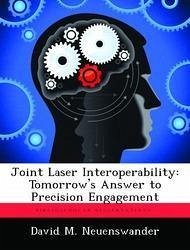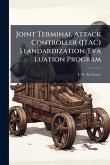Joint Vision 2020 directs a transformation of Department of Defense to meet US needs in the next century. One of the major goals of this transformation is a fully joint force capable of precision engagement. This monograph proposes a concept called Joint Laser Interoperability and discusses whether or not this concept provides some or all of Joint Vision 2020s precision engagement. The discussion begins with the current state of US laser systems and the present state of interoperability. This includes a brief discussion of how a laser works and what constitutes the basic parts of a laser system, laser range finders, laser designators, laser spot trackers, and laser guided weapons. The monograph also explains the difference between eye-safe and non eye-safe lasers. Once the monograph outlines current laser system capabilities it describes how current air, ground, and naval laser systems could be combined with new technology to create a joint force that is fully laser interoperable. The monograph also suggests changes in future organizations and equipment such as the US Army's Interim Brigade Combat Team (IBCT). These changes focus on providing a laser based precision capability to units that do not have one, and increasing the capability of those units that already possess some laser capability. After defining Joint Laser Interoperability, the monograph discusses the operational advantages this concept could provide the DOD and how the concept would enhance current precision engagement capabilities. The monograph discusses the joint advantages in both deep and close operations, and how the air, ground, and naval elements would benefit from Joint Laser Interoperability. The monograph also discusses the limitations and roadblocks to fielding this concept with respect to weather, communications, and doctrine. The conclusion shows that Joint Laser Interoperability provides a significant part, but not all of the precision engagement capability called for in Joint Vision This work has been selected by scholars as being culturally important, and is part of the knowledge base of civilization as we know it. This work was reproduced from the original artifact, and remains as true to the original work as possible. Therefore, you will see the original copyright references, library stamps (as most of these works have been housed in our most important libraries around the world), and other notations in the work. This work is in the public domain in the United States of America, and possibly other nations. Within the United States, you may freely copy and distribute this work, as no entity (individual or corporate) has a copyright on the body of the work. As a reproduction of a historical artifact, this work may contain missing or blurred pages, poor pictures, errant marks, etc. Scholars believe, and we concur, that this work is important enough to be preserved, reproduced, and made generally available to the public. We appreciate your support of the preservation process, and thank you for being an important part of keeping this knowledge alive and relevant.
Bitte wählen Sie Ihr Anliegen aus.
Rechnungen
Retourenschein anfordern
Bestellstatus
Storno








